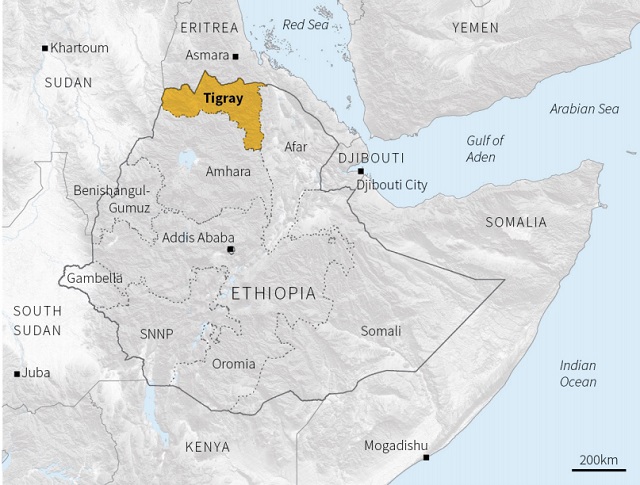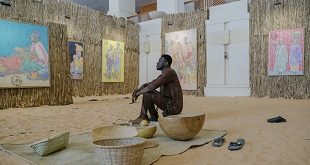
From Early Warning to Early Action; a view from the International Crisis Group
Unless urgently halted, the ongoing armed confrontation between Ethiopia’s federal forces and those commanded by the northern Tigray region’s leadership will be devastating not just for the country but for the entire Horn of Africa.
In a televised address on 4 November, Prime Minister Abiy Ahmed said he had ordered the military to take action against the Tigray People’s Liberation Front (TPLF), the ruling party in the country’s northernmost region, in retaliation for what he described as a TPLF attack on a federal military base earlier that day. His office also announced a six-month state of emergency in Tigray.
A war that many Ethiopians feared was possible but hoped would never happen appears to be under way. Eminent Ethiopian statesmen, African leaders and the country’s international partners need to urgently press Addis Ababa and the TPLF to cease fire and enter unconditional discussions on sustaining a truce. As soon as the shooting stops, all sides should embrace a comprehensive national dialogue that many within and outside Ethiopia view as the surest way of steadying its troubled transition.
Tensions have been running high for months between the federal government and the TPLF, which was a pre-eminent political force for three decades until Abiy took office in April 2018. A prolonged conflict, which at this point looks plausible, would test the integrity of the Ethiopian state and armed forces, already shaken by numerous outbreaks of violence across the federation. It could well draw neighbouring Eritrea – whose President Isaias Afwerki is close to Abiy – into confrontation with the TPLF, a sworn enemy of Asmara. The TPLF dominated the former ruling coalition of Ethiopia when it fought a war with Eritrea between 1998 and 2000.
Given the strength of Tigray’s security forces, the conflict could well be protracted. Tigray has a large paramilitary force and a well-drilled local militia, thought to number perhaps 250,000 troops combined. The region’s leadership also appears to enjoy significant support from Tigray’s approximately six million people, again suggesting that war could be lengthy and bloody. Critically, as outlined in an October Crisis Group briefing, conflict could test the national military’s cohesion, putting particular stress on the Northern Command, which is based in Tigray. This unit has more than half the military’s personnel and mechanised divisions. It also has a large proportion of Tigrayan officers.
In an address to the nation late on 4 November, Prime Minister Abiy said federal forces had made substantial gains in the first round of clashes, although whether that is the case remains unclear. He said the army, fighting alongside Amhara regional forces, had “fought a historical battle” against what he described as “traitors” from the TPLF, adding that more operations were planned in the coming days. Information out of Tigray has been limited after telecommunications in the region were cut in the hours after the conflict broke out. For its part, the TPLF has issued a statement saying that Tigray would prevail in the conflict.
Aside from the alleged TPLF attack on the military base, the immediate cause of the hostilities was a constitutional dispute over delayed national elections that brought the spat between the federal and Tigray authorities to a head.
In June, the federal parliament ruled that all government terms should be extended past their constitutional limits after the COVID-19 pandemic triggered the postponement of polls initially due in August.
Tigray rejected the extensions as unconstitutional and held its own regional elections on Sept.09, in defiance of the federal government. In response, Addis Ababa ruled Tigray’s leadership unlawful, while Tigray declared it would no longer recognise Abiy’s administration after the first week of October, when its term would have expired had polls not been postponed.
The federal government then announced it would redirect budgetary allocations to Tigray, which the TPLF retorted would be “tantamount to an act of war” in that it would undermine the country’s federal arrangement.
The descent into conflict in the early hours of 4 November was sudden but predictable. Both sides have engaged in escalatory conduct for weeks and hostilities were preceded by reports of Ethiopian federal troop build-ups on Tigray’s southern flanks, as well as by Eritrean forces on the border with Tigray’s north.
On Nov.02, Tigray’s president told the region to prepare for war, while the next day the federal parliament, in a move that all but closed the door to a negotiated resolution, said Tigray’s ruling party should be designated a terrorist group. In his Nov.04 statement, Prime Minister Abiy said the military was forced to launch the war to “save the country” and condemned what he called months of TPLF “provocation and incitement”.
Given the likely catastrophic consequences of the conflict for both Ethiopia and the region, it is essential that all sides step back and halt hostilities before it is too late. Neither party stands to profit from war. Even if Ethiopian troops oust the TPLF leadership quickly, which appears unlikely, TPLF loyalists – some of them hardened veterans of a rebellion that brought them to power in 1991 – would probably mount sustained armed resistance. Meanwhile, the federal government’s use of force against a regional ruling party that says it is asserting self-rule rights protected by Ethiopia’s constitution could further destabilise the country. It may provoke political factions outside Tigray to step up efforts to safeguard their own groups’ autonomy in the face of what they view as an overbearing central government.
Ethiopia’s size and importance means that a lengthy war would reverberate well beyond its borders. The country is Africa’s second most populous country and pivotal to stability in the Horn of Africa. If Eritrea enters to support Addis Ababa, it would internationalise the conflict and could draw in different Sudanese constituencies, each of which has reasons to back Addis Ababa, Mekelle or Asmara.
Sustained fighting would send tens of thousands of refugees into neighbouring countries, and possibly leave a security vacuum in Somalia, where Ethiopian troops are deployed as part of an African Union (AU) mission to help the government in Mogadishu defeat the Al-Shabaab insurgency.
Immediate, concerted mediation – local, regional and international – is needed to avert a descent into a broader crisis. To halt the fighting, eminent Ethiopian figures, including former military leaders and senior diplomats who have been trying to bridge the gaps between Addis Ababa and Mekelle, as well as Ethiopia’s international partners, notably Horn of Africa states, the AU, the European Union (EU), European governments and the UN, should press all sides to agree to a ceasefire and hold talks to maintain the truce.
The next steps must include comprehensive and inclusive dialogue to bridge Ethiopia’s many fault lines. Given the severity of the crisis, jailed opposition leaders should participate in the talks in order to maximise chances of success. The dialogue needs to also discuss ways to end the ethnic killings that have become almost routine across the country. The dangers were highlighted yet again by the gruesome murder of dozens of Amhara civilians on Nov.02 in Oromia region.
International actors, many of whom have heavily supported Abiy since he took power, need to lean heavily on the Ethiopian government to persuade it that force cannot bring a sustainable solution to either the Tigray dispute or Ethiopia’s broader challenges. Instead, Addis Ababa urgently needs to accept, as already suggested by both the AU and EU, a national dialogue with all relevant political actors. The alternative could be a return to the long-running conflicts of the past that ruined millions of lives.
****
 The Independent Uganda: You get the Truth we Pay the Price
The Independent Uganda: You get the Truth we Pay the Price

